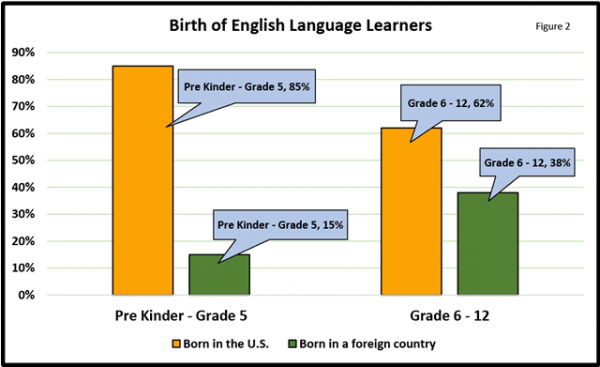Defining Immigrant Children and Youth
LEAs are required to use the Title III, Part A federal definition of immigrant children and youth in order to determine immigrant student status for funding and for coding in the Texas Public Education Information Management System (PEIMS). Immigrant status under Title III, Part A is not interchangeable with the
- definition used for state assessment purposes, or the
- definition used for student eligibility for English I for Speakers of Other Languages or English II for Speakers of Other Languages taught in high school.
Note: LEAs should not assume responsibility for determining citizenship status under Immigration and Naturalization Service regulations.
In reference to Title III, Part A, the phrase "immigrant children and youth" refers to individuals that meet all three of the following criteria:
- Are aged 3 through 21;
- Were not born in any State*; and
- Have not been attending one or more schools in any one or more States for more than three full academic years.**
Note: The three full academic years need not be consecutive. LEAs are responsible for reviewing and tracking the number of years immigrant students have attended schools in the U.S. The immigrant status from the permanent record must be removed once the three years in U.S. schools requirement has been met.
*Children born to United States (U.S.) citizens abroad (e.g., children born on a military base overseas) can be considered immigrants for purposes of the Title III if they meet all the criteria in the definition of immigrant. For purposes of Title III, the definition of "State" includes each of the 50 states, the District of Columbia, and the Commonwealth of Puerto Rico. For this reason, children born overseas to U.S. military personnel, not born in a State, can fall within the Title III definition of immigrant children and youth if they meet all of the other criteria of that definition.
**The criteria indicating three full academic years when identifying immigrant children and youth stipulates the number of months that the student has been in school in any one or more States must not add up to a total of more than three full academic years.
(U.S. Department of Justice, 2014 & U.S. Department of Education, 2014)
Common Terms
Common Terms Used to Describe Immigrant Children and Youth
Immigrant Students Enrolling in Texas Schools
LEAs shall not unlawfully discourage or bar students, including students who are undocumented or have parents who are undocumented, from enrollment in U.S. schools. The United States Department of Education (USDE) encourages LEAs to proactively implement supportive enrollment policies and practices that create a welcoming and inclusive environment for all immigrant students. The chart below shows examples of acceptable and unacceptable practices for LEAs.
| It is acceptable to | It is not acceptable to | |
|---|---|---|
|
solicit documents for address verification, such as a utility bill, rent payment receipt, copy of a money order made for payment of rent, parent affidavit, mortgage or lease document, telephone bill, or a letter from an employer written on letterhead; support a lack of proof of residency for undocumented homeless children under the Federal McKinney-Vento Homeless Assistance Act; and require minimal information, such as immunization history, proof of age, and residency within an LEA. |
deny the right to a free public education; inquire about a student's citizenship or immigration status; refuse entry of a student presenting a birth certificate indicating a birth place outside of the United States; prevent a student from enrolling if the student's social security number is not provided; and discriminate on the basis of color, race, or national origin. |
(U.S. Department of Justice, 2014; USDE, 2014)
Links to Additional Information
School Enrollment Procedures Letter
Fact Sheet: Information on the Rights of All Children to Enroll in School
As LEAs begin to identify the diverse population within the school community, it is important to examine the diverse characteristics and experiences foreign-born children and youth bring with them. Differences may be tied to academic and linguistic experiences that differ from the educational system and civics education of the U.S. During this identification process, remember that foreign-born students may not be English learners (ELs), just as ELs may not be immigrants.
See the Enhancing Instructional Opportunities for Immigrant Students: Identification and Procedural Companion attachment below this section for access to information supporting LEAs in this identification process.
Understanding the Background of Immigrant Students
(Pew Research Center, 2015)
(Migration Policy Institute, as cited in Zong & Batalova, 2015)


